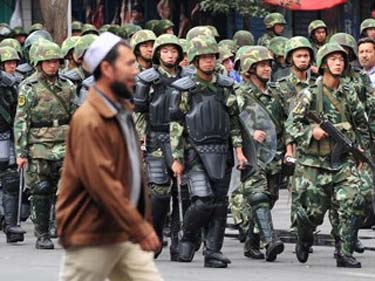Prima facie the picture might appear unremittingly bleak, but in reality it represents a marked improvement in Chinese media savvy. Indeed, the result this time is little short of a PR coup for the PRC, at least compared with the clumsy management of the riots in Tibet last year, when the CCP scored a spectacular own-goal by enforcing a blanket ban on the international media which rendered balanced reporting impossible. China’s openness this time round should be regarded as a step in the right direction by western commentators.
Moreover, China is perhaps the most rapidly developing nation in the world today and the Chinese learn fast. The press freedom afforded to the international, and increasingly also to its domestic media, in the wake of 7.5 is a case in point. This unprecedented openness is another important step forward for which the Chinese government deserves due recognition. It faces the thankless task of managing a treacherous web of ethnic relations in a country with a total population double that of the whole of Europe, which, contrary to perceptions of China as a vast monolith, consists of a delicately stitched patchwork of 56 officially recognised ethnic groups. Western nations need few reminders of how intractable ethnic relations can be, even for developed countries, after the searing lesson of the Balkans in the 1990s.
Although greater press freedom is essential, ultimately the Xinjiang problem cannot be resolved by a PR campaign. Points won this time will just as quickly be lost if the CCP fails to tackle the underlying problem. Thankfully, the Western press does have a bias for negative reporting and it is bad news which sells newspapers, thus to avoid falling foul of its fickle new media friend the Chinese government needs to be brave enough to find a permanent solution to the Xinjiang question.
Firstly, the solution does not lie in the firing of the feckless Wang Lequan, who like many hapless, high-ranking Chinese officials inherited a ticking time-bomb in Xinjiang which he only had the misfortune of watching blow up under his watch. Nor does the solution reside in flooding Xinjiang with migrants while pacifying Uighur hostility with economic development and policies that discriminate against Han Chinese. These policies are unlikely to succeed for the CCP, and, as the technology and means of terrorism have never been so readily available to those who wish to employ it, the CCP run the very real risk that the spurious spectre of Uighir terrorism raised in the aftermath of 9/11 will become a deadly reality.
Anthony Garnaut previously compared the causes of the riots in Xinjiang to the injustices and racism that provoked rioting in LA following the appalling police brutality towards Rodney King (and the inadequate response from America’s White Establishment) in 1992. To invoke another lesson from Anglo-Saxon history, the solution to Xinjiang might be found along the lines of the Northern Ireland model of devolution and power sharing. There, the UK government was brought to its knees by a single renegade province with a population of a little over 1.5 million. It tried and failed to crush unrest through military might, infamously opening fire on unarmed protestors and shooting 72 of its own citizens during the Bloody Sunday massacre. It also pointedly tried to bring peace through prosperity, a British brand of economic development, but this, too, failed because it did not recognise the legitimate aspirations of all communities for self-governance.
Only after exhausting all the alternatives did the UK government finally begin to resolve the troubles when the signing of the 1998 Good Friday Agreement gave birth to the process of power sharing between the Protestant and Catholic communities. This agreement seemed to balance the demands of both parties, reconciling the one’s ambition to remain part of the Union with the other’s intransigent insistence on outright independence. Simplifying grossly, the Northern Irish now have their own parliament, make their own legislation and have powers over most things with the exception of defence and foreign policy. This is a model which might interest aspiring Chinese politicians.
In the Chinese context, granting ethnic minorities real autonomy is not tantamount to independence. Whereas independence is something which is manifestly not in the interests of the majority of Chinese, the majority of Uighurs, and certainly not in the interests of the wider international community, autonomy means giving the Uighurs power to make their own decisions within the framework of a Chinese nation-state. It goes against the belief of politicians of all countries and every political persuasion to devolve, or de facto give up, power. And yet, paradoxically, the English experience in Northern Ireland shows that unity can only be preserved and even enhanced by letting go. This is a timeless truism transcendent of all cultural boundaries, and it defies the imagination that a government with aspirations to represent the Chinese people will in the end not grasp such a basic equation of universal realpolitik.


This is by far the most balanced and objective reporting and discussion on Xinjiang that I have seen for a while. Well done, Mike.
It is an interesting to see what real autonomy means and who it can be implemented in Xinjiang without real changes in the country’s whole political system.
I don’t have information on the ethnic compositions in Xinjina. But let’s consider two scinarios:
1. The Hans is the mojority in Xinjiang. Under this scenario, what is likely to be the power composition? Would it satisfy the Uighurs if the Han people have majority in the automomous government?
2. The Uighurs is the majority. Under this scenario, the Uighers is likely to be in majority in government. Does it want to have shre power with other minorities, mainly the Hans?
3. What would be the policy in terms of immigration to the region? Restrictive or open to all Chinese, irrespective to their ethnic groups?